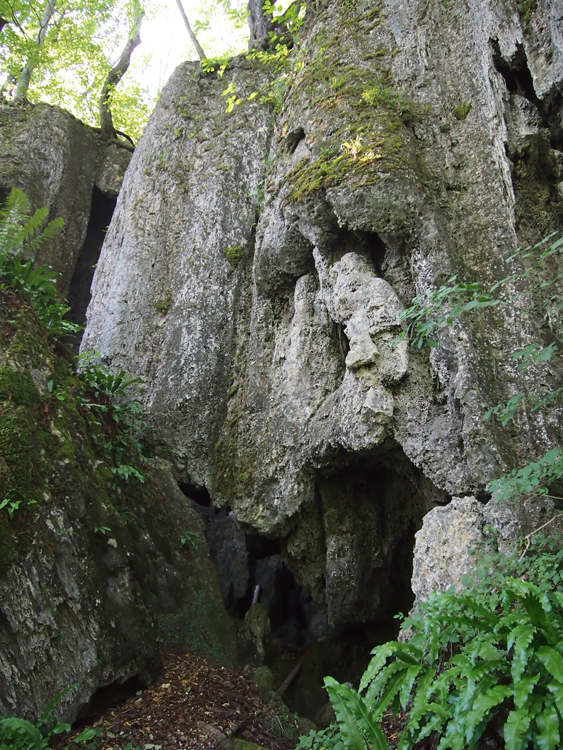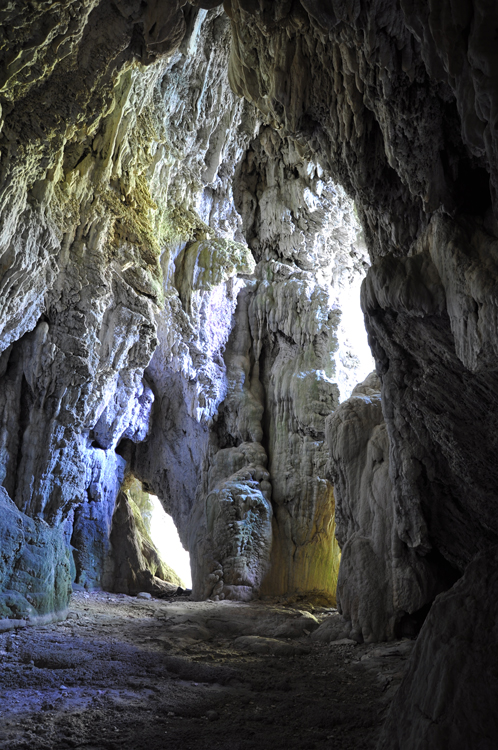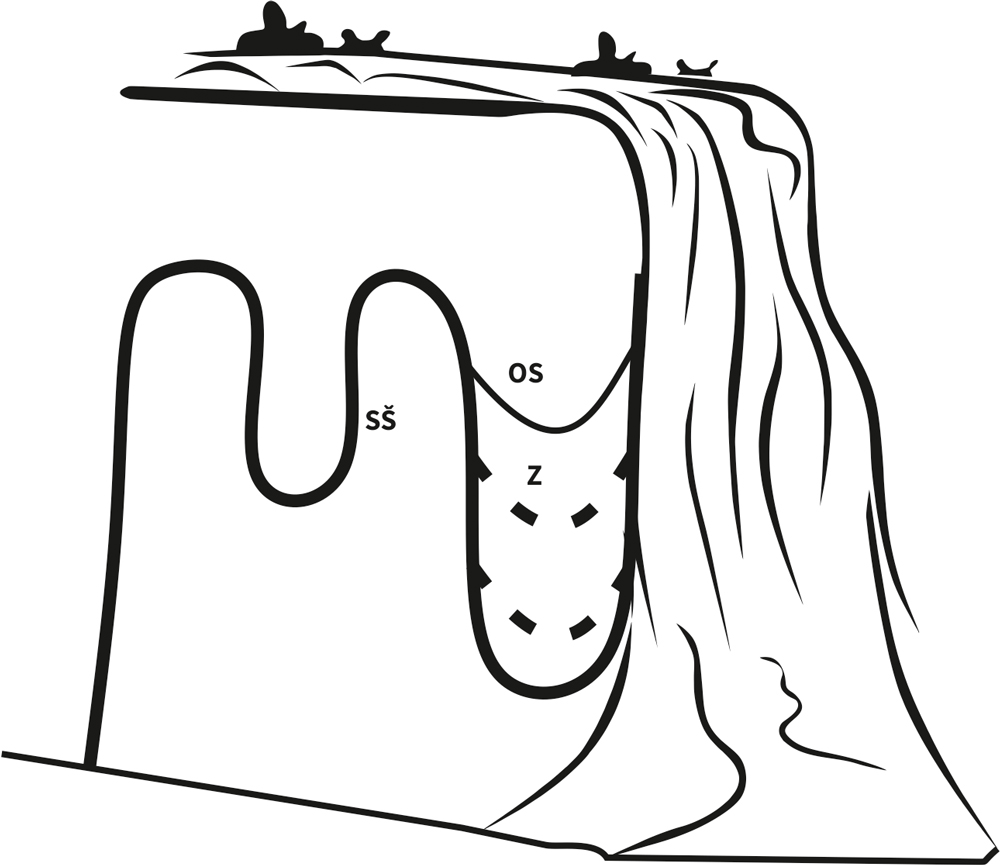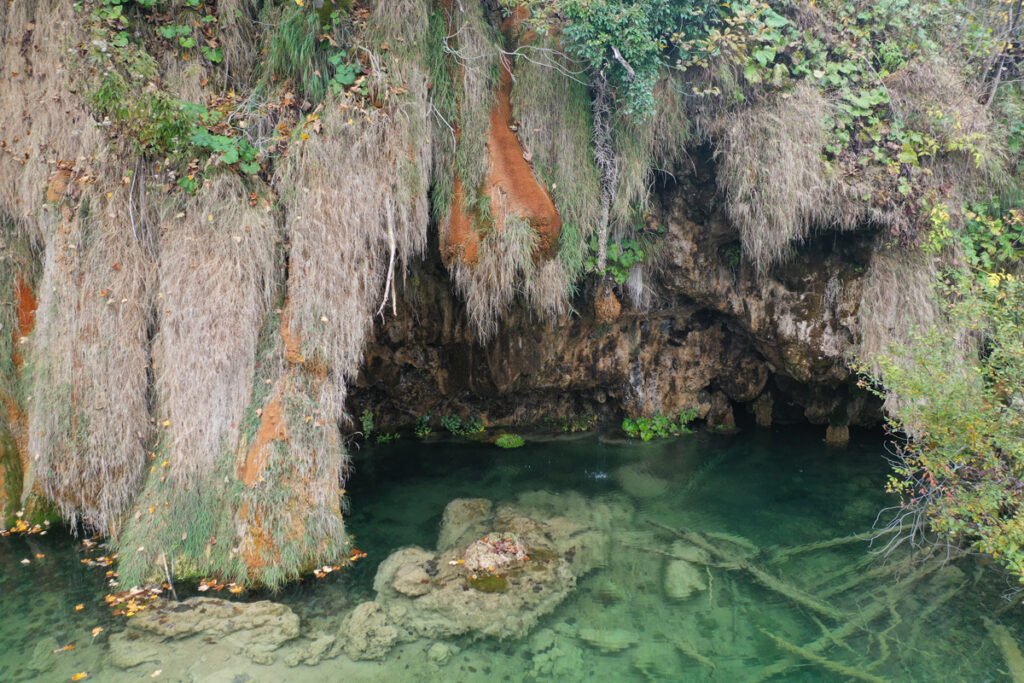Hidden from prying eyes, the Plitvice Lakes National Park is home to a priceless treasure – a cave garden. A cave garden is a very rare karst formation that may develop under cascades and waterfalls during an intensive tufa formation process. It is formed by numerous tufa cavities, semi-caves and caves.
The Plitvice Lakes cave garden is located below the more than 200 m wide Labudovac barrier (exit barrier of Lake Prošćansko). It is estimated to be between 300 and 1600 years old.
Unlike the “usual” caves, tufa caves are not formed by rock (or, in this case, tufa) melting, but by closing the cavities within the tufa barrier itself.
The development of the cave garden can be attributed to the specific conditions of the tufa formation process. When the tufa formation process on the barrier begins at the very edge of the cascade (rim of the cascade), over time the tufa grows outwards and downwards, thereby creating a curtain-like shape. When the curtain lowers to the ground, it closes the space inside the barrier and thus creates a tufa cave.
Below the Labudovac cascade, which is more than 20 m high, is the entrance to Janeček’s cave. It is a cave more than 50 m long, consisting of 2 halls and 2 corridors. At the bottom there is a small lake with a depth of up to 0.4 m and a surface area of 12 m2, decorated with numerous stalactites and stalagmites, as well as other tufa decorations.
Back in 1910, Dragutin Franić wrote about this phenomenon: “Under the first veiled (net-like) waterfalls at the foot of the rocks of Lake Prošćansko, several untouched dripstone caves and caverns have been found, the bottom of which is under water. The water is of “a beautiful dark or dull blue colour”… You enter larger and smaller caves until you reach the largest cave called “the Chapel”. The ceiling of this cave is beautiful, and it seems to be formed by massive rows of larger and smaller pearls as well as all kinds of other dripstone formations, which resemble the most delicate works of art or filigree work. “With the exception of the Lower lakes, it is the most wonderful part of Plitvice.”
Today, a part of the cascade covers the entrance itself, so it is no longer possible to enter the cave.
The Labudovac barrier cave garden is not the only tufa cave in the Park. Many are hidden (and undiscovered) under active cascades. When there is a change in the water flow when, for example, a part of the barrier breaks off, smaller or larger cavities are often discovered that hide a real treasure – tufa caves.
Read other interesting stories from the Plitvice Lakes National Park






